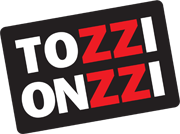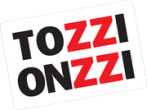This is the date when you must be on the company’s record as a shareholder to receive the dividend payment. Once the record date is set, the ex-dividend date is also put in place according to the rules of the stock exchange on which the stock is traded. This usually means that the ex-date is one business day before the record date.
- The ex-dividend date or “ex-date” is the day the stock starts trading without the value of its next dividend payment.
- Companies use dividends to distribute profits to shareholders and may pay out dividends in several different ways, including cash dividends, stock dividends, or property dividends.
- This means that if you are the owner of the stock when the market closes the day before the ex-dividend date, you will be locked in to receive the dividend on the previously specified payable date.
- Business days are defined as working days with the exception of weekends and major public holidays when U.S. stock exchanges and banks are closed.
- Companies announce these and other significant dates on a specific schedule.
- To ensure that you are in the record books, you need to buy the stock at least two business days before the date of record, or one day before the ex-dividend date.
You’ll need to hold the shares until the ex-date or later to receive the payout. Remember, the declaration date has passed and everybody else knows when the dividend is going to be paid too. On the ex-dividend date, the stock price will drop by roughly the amount of the dividend as traders acknowledge the reduction in the company’s cash reserves. The date of record is the date in which the company identifies all of its current stockholders, and therefore everyone who is eligible to receive the dividend. Another rarer type of dividend is the property dividend, which is a tangible asset distributed to stockholders.
There are exceptions to these rules, including cases of special dividends, stock splits, and other distributions such as stock dividends. As an example, anytime a dividend is 25% of the stock’s value or more, the ex-date is deferred until one day after the payment date. If you don’t own a dividend-issuing stock on the ex-dividend date, you won’t be recorded on the dividend record date, and you won’t receive the dividend on the dividend payment date. You must be a shareholder on or before the next ex-dividend date to receive the upcoming dividend. Ready to start considering dividend stocks for your investment portfolio?
The date on which the company announces its dividend is referred to as the dividend declaration date. The company will usually issue a press release and post the announcement on its website. The ex-dividend date is normally one business day before the record date. For example, if the record date is a Monday, then the ex-dividend date would be the previous Friday. The ex-dividend date and the date of record aren’t the only important dates you should know as a dividend investor. The following are some additional important dates that all dividend investors should know.
Ex-Dividend Calendar
Understanding the ex-dividend date, dividend record date, and dividend payment date are important for any investor who wants to take advantage of dividend payouts as part of their strategy. “Staying mindful of the ex-dividend date whenever trading stock can be the difference between capturing the upcoming ex dividend date dividend income or not,” Melchiorre says. On February 1, Company A declares a dividend that will be paid to its shareholders on March 30; this is the payment date. Company A also says that shareholders who own the stock on or before February 10 will be entitled to the dividend; this is the record date.
Understanding ex-dividend dates
Since buyers aren’t entitled to the next dividend payment on the ex-date, the stock will be priced lower by the amount of the dividend by the exchange. To understand the ex-dividend date, we need to understand the stages companies go through when they pay dividends to their shareholders. If you want to buy the stock and receive the dividend, you need to buy it on Monday.
Why is the Ex-Dividend Date Significant to Investors?
An investor who wishes to be entitled to the dividend does not have to wait until after the record date to sell the stock; however, the investor must hold the stock until the ex-dividend date. If the investor were to sell the stock on the ex-dividend date or afterwards, the investor would still be entitled to the dividend payment. In this example, assuming that the investor purchased the stock one day before the ex-dividend date, the investor would be a stockholder on the record date. If the investor sells the stock on the ex-dividend date, the buyer of the stock would be a stockholder one day after the record date given the two stock business trading day settlement.
The money will appear in the shareholder’s brokerage or checking account or, on rare occasions, if the payment is received as a check via registered mail. Let’s say that on Friday, Feb. 4, XYZ Company declares a dividend for its shareholders. Shareholders of record on that date will be eligible to receive the dividend. The SEC https://1investing.in/ T+2 rule for the timing of the settlement of trades calls for stock transactions to settle (or be completed) no more than two days after a transaction takes place. That’s why purchases made the day before the ex-date, which then settle on the record date, make the buyer the owner of the record for purposes of dividend payment.
Market regulators occasionally change the supervisory rules governing market trading, with the consequence of changing the ex-dividend date formulas. This trading strategy invovles purchasing a stock just before the ex-dividend date in order to collect the dividend and then selling after the stock price has recovered. The ex-dividend date is when you must own a share of stock to qualify for a dividend payment. While this basic ex-dividend date meaning is important, it only tells some of the story you should know as an investor. Learn more about ex-dividend date stocks and the multiple dates dividend investors should know. If you buy a stock on its ex-date or after, you will not receive the next dividend payment.
The record date is when the company determines the shareholders entitled to a dividend. The ex-date is usually the day before the record date and determines which shareholders are entitled to a payment. You must be a shareholder before the ex-date in order to collect a stock dividend. If you buy shares on or after the ex-dividend date, you are not entitled to that payment. To receive a dividend, you have to be the owner of record as of the dividend date of record. But remember, stocks trades don’t officially settle until two business days after the transaction.
Business days are defined as working days with the exception of weekends and major public holidays when U.S. stock exchanges and banks are closed. It’s also important to note that dividend payments are generally not guaranteed, meaning that a company may choose to suspend or reduce its dividend payments at any time. While some companies have built a reputation for paying dividends for decades, others have had to suspend or cut dividends in times of economic uncertainty.
Companies announce these and other significant dates on a specific schedule. On April 19, 2022, Johnson & Johnson (JNJ) announced that it was going to pay a quarterly dividend of $1.13 per share. The Charles Schwab Corporation provides a full range of brokerage, banking and financial advisory services through its operating subsidiaries.
A one-time dividend such as the one in this example is called an extra dividend. The U.S. Securities and Exchange Commission sets the ex-dividend date to one day before the record date, so that buy and sell information is captured before the record date. The time difference between the dividend record date and ex-dividend date allows the necessary time to prepare paperwork and electronic records. A good company tends to have a long-established record of raising the dividend by a rate substantially higher than inflation over many decades. It can do that, thanks to a strong core economic engine that frequently enjoys high returns on capital.

